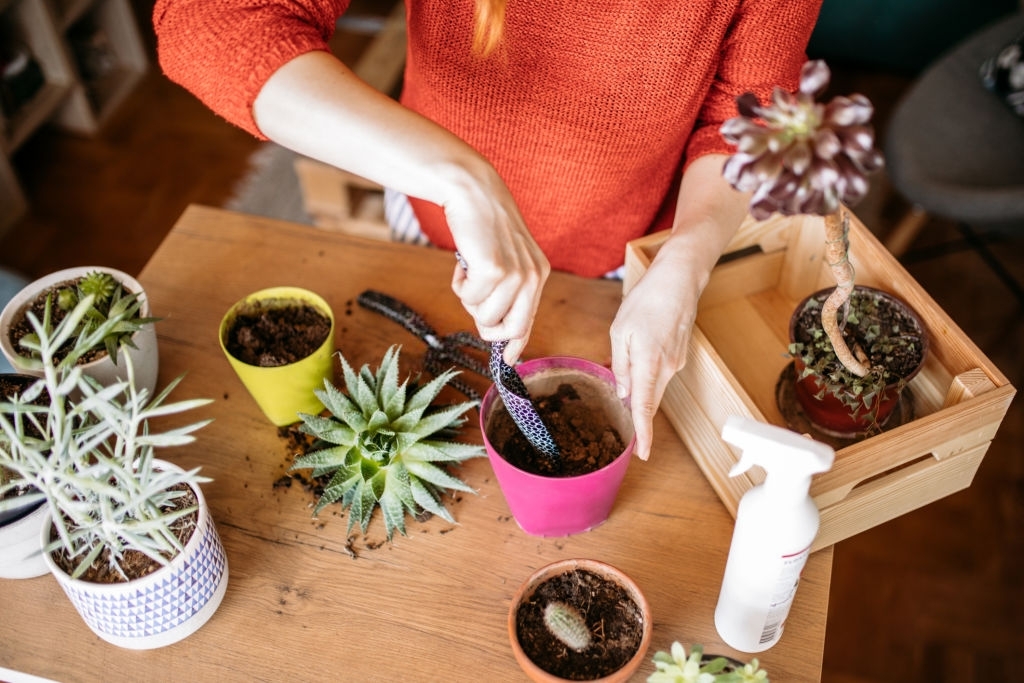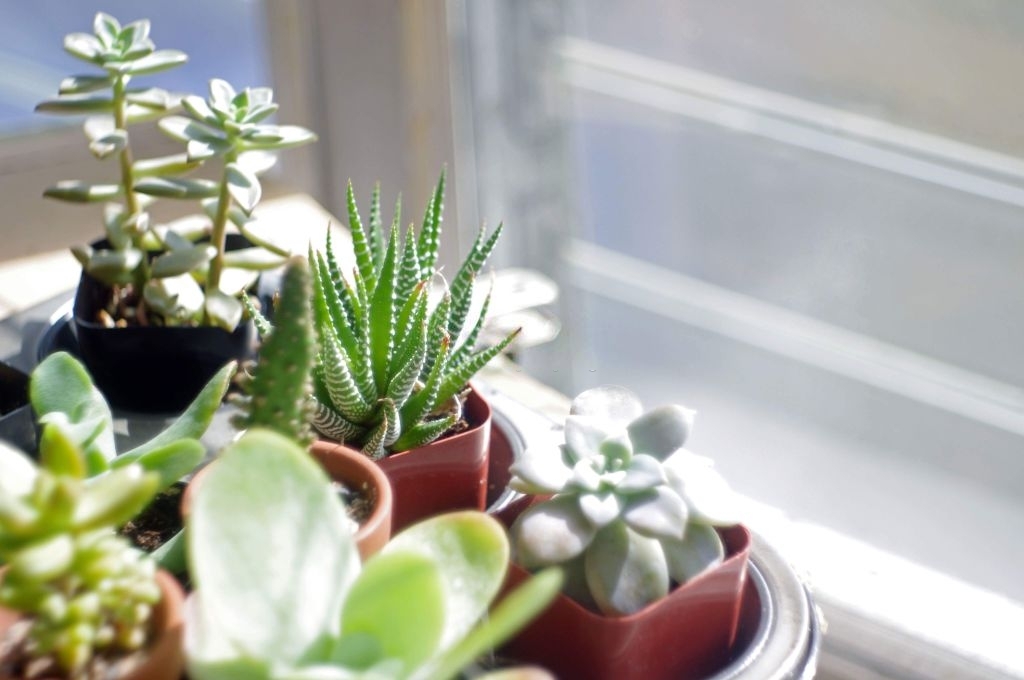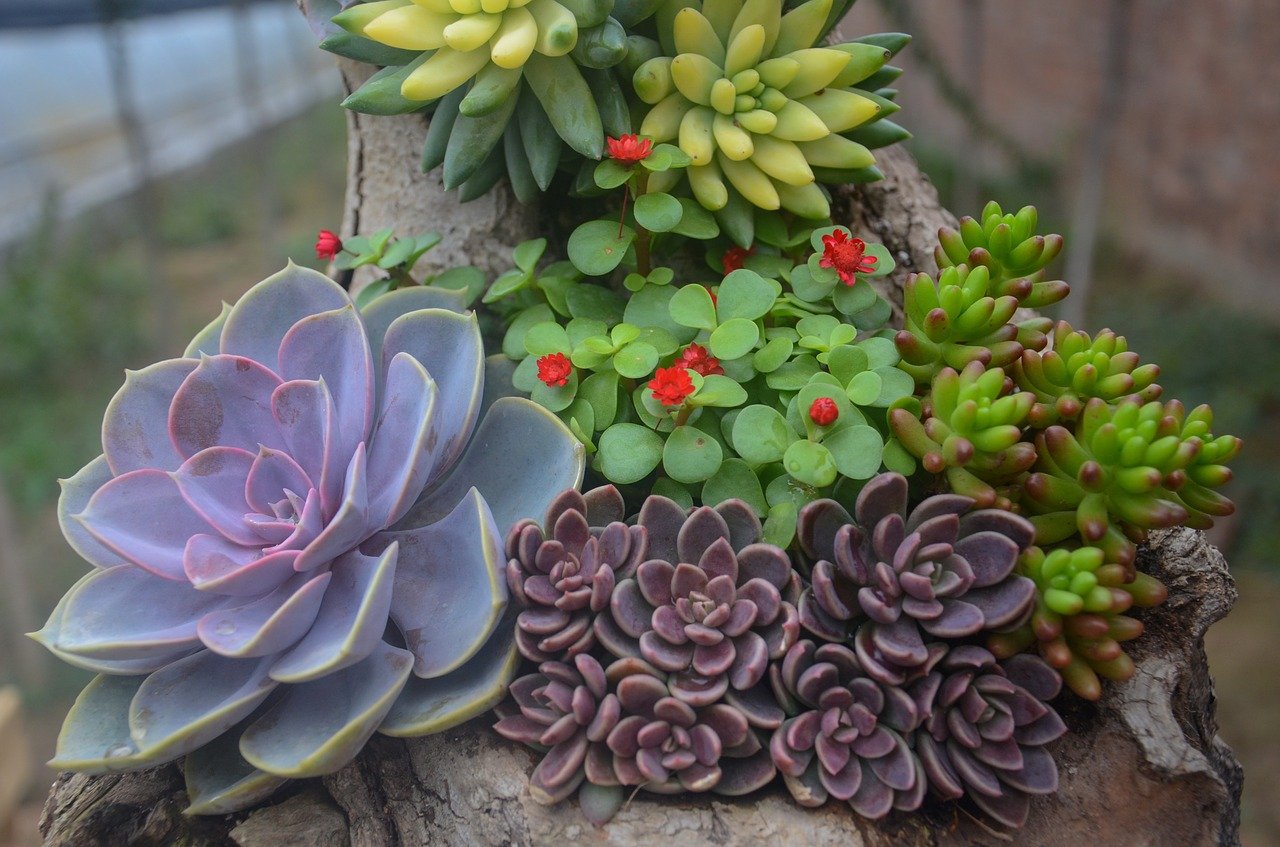Succulents are becoming increasingly popular as indoor and outdoor plants. They’re low-maintenance, have captivating colors, and interesting forms to liven up any space. Another distinctive quality of succulents is their ability to propagate easily at low costs. Some species can even grow new plants from a leaf that has fallen off! Perfect for beginners to propagate, here is a guide of everything you need to know about succulent lead propagation.
This guide about how to grow succulents from leaves includes information from the best plants to use and how to remove leaves to step-by-step details on three propagation methods. Get ready to expand your succulent plant into an impressive collection, one leaf at a time.
What Are Succulents?
Succulents are a group of plants that store water in their leaves, roots, or stems. There are thousands of species ranging from aloes and echeverias to cacti and agaves. They come in a variety of shapes, colors, and textures. Succulents can also change color depending on temperature, water, and sunlight. For example, succulents with little or too much sunlight are often green, dull, faded, or sunburnt. However, with just the right amount of light, their colors can intensify. They can be orange, pink, purple, red, or even purplish-black.

While there are differences between each species, most succulents prefer dry climates that aren’t too cold or humid. They can endure long periods of drought by relying on the water and nutrients stored in their leaves. Leaving their roots in water for too long can lead to succulents rotting and dying. Except for a few species, freezing conditions will also result in mushy leaves or the plant dying.
The 3 Main Leaf Propagation Methods
When searching for how to grow succulents from leaves, there are three main methods you can choose. This guide will detail each method, so you can decide which way you want to try first. As an overview, the three methods are:
Dry Propagation
This method is also known as air propagation and is best for beginners. It’s a low-effort way to expand your plant collection by placing succulent leaves on a tray.
Water Propagation
The water method involves rooting succulent leaves in water before planting them.
Soil Propagation
This method is one of the most common ways to propagate succulents. You place callused leaves on top of well-drained soil.
What Succulents Are Best for Leaf Propagation
If you are new to propagating succulents, pick a species that’s easier to propagate from leaves, such as plants in the rosette succulent genera. Make sure the plant has thick leaves, especially for methods that don’t require watering the leaves. When the mother plant has healthy and plump leaves, it provides sufficient water and nutrients for each separate leaf as it develops roots. Examples of succulents great for leaf propagation include:

- Kalanchoe
- Echeveria
- Graptoveria
- Jade plants
- Sempervivum
- Aloe vera
- Haworthia
- Sedum Jelly Bean
Succulent Propagation Tools
Propagating succulents is relatively easy and inexpensive, especially because you don’t need many tools. Here are the main items you should have, with a few only for specific methods:
- A healthy mature succulent
- Succulent or cactus soil
- Spray bottle for fine mists
- Small shovel, rake, and spade
- Paper towel
- Small tray (for dry and soil propagation)
- Pumice (optional for soil propagation)
- Glass jar (for water propagation)
- Plastic wrap (for water propagation)
- Succulent pots for replanting
How to Use The Dry Method
Dry propagation is the best method for beginners and anyone without a lot of experience with succulents. There is a lower risk of root rot or mealybugs infecting your plants, so there’s a higher chance of successful propagation.
Propagation Steps
- Remove the leaves you want to propagate from the mother plant.
- Place the leaves on a tray. You can also use an egg carton or cup.
- Put the tray in an area away from direct sunlight to prevent leaves from becoming sunburnt.
- Check on the leaves once a week to make sure they aren’t getting too much sunlight.
- Move your tray to a less sunny area if you see the leaves have darker roots, as they might start to shrivel.
- Wait between one to two months for the roots to grow healthy enough for planting.
How to Use The Water Method
Similar to the dry method, there’s no need to water your leaves with water propagation. This prevents the risk of overwatering. However, make sure you place the leaves properly without touching the water.
Propagation Steps
- Remove the leaves you want to propagate from the mother plant.
- Place your leaves on a tray to dry, usually for 5-7 days or until small roots form. Healthy leaves for propagation shouldn’t die without water.
- Select a glass container to put water in. You can use a narrow neck bottle or a jar covered with plastic wrap that you cut slits into for holding your leaf tips.
- Place the leaves root side down towards the water. Make sure the leaves don’t touch the water and remain about 0.5 to 1-inch away from the surface.
- Find a bright spot away from direct sunlight to place the water jar with the leaves.
- Now, wait until the leaves sprout roots reaching for the water. It can take between 2 to 6 weeks.You want to continue to keep the roots above the water to prevent rotting.
- Check your leaves weekly and refill or change out the water.
How to Use The Soil Method
The soil method is the most commonly used. However, since you need to provide water to make sure the soil doesn’t dry out, it can be harder to get right for beginners.
Propagation Steps
- After selecting the leaves, you want to propagate, place them on a paper towel for a couple of days so the cut ends dry out.
- Prepare succulent or cactus potting soil in a pot or clear space where you already have another plant growing. You might want to add a layer of pumice or perlite above the soil to prevent rotting.
- Lay the leaves flat on top of the soil, pumice, or perlite.
- Place the pot in an area with filtered, bright sunlight. Keep watering the soil to a minimum until roots start to grow to prevent the leaves from rotting.
- Roots should start growing after around 2 weeks. You can now mist the soil with water more often to prevent the soil from drying.
- Little plants should appear in around 8 weeks.
How to Pot Your New Plant
It’s best to wait until the root has grown at least an inch long before potting your new plant. Sometimes the mother leaf would have started to dry out; that is okay, it is often a sign the plant is ready for potting. For the water method, before transferring the new plants to the soil, let them air-dry on a paper towel for a couple of days. Water roots are more fragile than soil roots, so be careful when handling them and planting them into the soil. For the soil method, you can replant it once the little plant is around half an inch and the original leaf is dried up. Scoop up the little plant from the soil, gently place it in a new pot, and cover the roots with soil. Use unfertilized cactus soil to plant your new plants. Make sure to place them in an area where they only get indirect light. Direct sunlight can burn them during their fragile beginnings.
Caring for Your Newly Planted Succulent
New succulent plants require more water compared to mature plants. Water them every other day using a spray bottle until they get bigger. Having a fine mist spray is best since you don’t want the soil to be too wet or the plants might rot. After your succulents mature, you can shift to watering them once a week. Always ensure your plants are in loose, coarse soil with great drainage to prevent rotting. Let the soil dry out each time before you water it again.
You can also transplant mature succulents to larger pots, garden homes, or combination planters. Although you should protect new and little plants from harsh direct sunlight, mature plants prefer full to partial sun. Depending on the amount of sun you expose them to, their colors will change.
Other Options Besides Leaf Propagation
Propagating succulents from leaves is a technique with a high chance of success. However, below are some other ways to propagate your succulents if you want to expand different species or explore different propagation methods.
Stem Cuttings
This method is much faster than using leaves but can be more difficult to prepare the cuttings. You can only propagate the Aeonium and Hoya species this way. Other varieties you can use include:
- Burro’s tail
- Sedum
- Jade plant
- Strings of Pearls
- Crassula
- Hawothia
- Aptenia
Seeds
Propagating succulents with seeds is usually the slowest way. You can collect seeds after the succulent is done flowering or buy seeds to use. Plants that grow fastest from seeds include:
- Echeveria
- Graptoveria
- Alow
- Sedum
- Kalanchoe
- Crassula
Offsets
Succulent offsets are also called chicks or pups since they often grow at the base of the mother plant, hiding under the “mom.” This method requires cutting an offset to replant it in a separate pot. Sempervivums are the most popular succulent for offset propagation as one plant can have up to 10 offsets per year. Other good species with durable offsets include:
- Crassula
- Hawothia
- Graptoveria
- Sedeveria
- Graptosedum
FAQs About Propagating Succulents From Leaves
Why Are My Leaves Not Growing Roots?
The three most common reasons why you might not see roots growing are:
- The wrong environment: depending on the method you use, the ideal condition varies. For example, dry propagation requires high humidity.
- Picking the wrong leaves: Make sure to choose thick, healthy leaves. Especially for the dry propagation method, the leaves need enough stored water.
- Picking the wrong plant: Not all succulents can be propagated from leaf cuttings. Some will grow roots but not develop into plants, such as Hoya succulents requiring stem cutting.
When is the Best Season to Grow Succulents?
Leaf propagation generally works best during the time of year right before the succulent naturally grows the most. For summer-dormant succulents, propagate their leaves during the spring or fall. For winter-dormant succulents propagate during the winter. However, even if you propagate leaves during the wrong time of the year, the plant will eventually grow with patience.
Why Do Leaves Rot or Turn to Mush?
Succulent leaves don’t start storing water until they develop proper roots. If you overwater them or the soil is too moist, the leaves can start to rot. When misting your plant, try to avoid the leaves and water just the soil. If the climate is too cold, this can also lead to mushy leaves and your plant dying.
Why Are There No Roots from The Leaves?
Sometimes extremely dry climates can prevent succulent leaves from sending roots. The soil propagation method can work well to control conditions. Consider adding a layer of pumice or perlite above the soil to keep the leaves from laying directly on the wet soil and prevent rotting.
Why Do Roots Dry or Wither?
New succulent roots are very delicate, so you should be careful when dealing with the plants. Avoid picking the leaves up and moving them around too much as this can lead to roots that dry up, wither, and die.
Final Thoughts
Succulents are eye-catching and durable plants to have indoors or outdoors. Using this guide to leaf propagation and just a few plants, you can easily grow a garden filled with various succulents to admire – all at very low costs and low maintenance.


